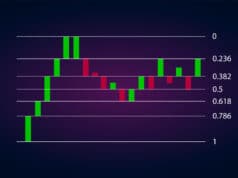The forex market offers traders several opportunities to make profits from currency price movements. However, the same market is riddled with high risks, as any wrong price moves can cause untold losses, especially to the novice trader. For this reason, a successful career in forex demands a sound risk management strategy. One of the ways of quantifying risk is through the risk to reward ratio.
Importance of risk management
Imagine this scenario: as a beginner trader, you get lucky enough to make profits a few times. However, one day rolls by, and you record a loss that negates all your accumulated profits. This frustrating scenario will only happen if you do not have a sound risk management strategy.
To achieve success in the forex market, you need to find the most appropriate risk to take while aiming at a reasonable take profit level. The position of your stop-loss determines this risk. You obtain your risk to reward ratio by dividing the risk by your profit target.
The importance of finding the appropriate ratio cannot be understated. Let’s say you arbitrarily decide to set your stop loss 10 pips away and your take profit 30 pips away, a ratio of 1:3. This is a viable ratio, but if your trading strategy cannot deliver this ratio, you’ll record a loss in the long run. Similarly, you could set a ratio of 1:4, but every time you realize a profit of twice your risk, you choose to bow out of the trade. This may keep you in profit, but you’re essentially leaving money on the table.
The best way to determine your risk to reward ratio is to subject your strategy to rigorous backtesting and forward testing. This way, you can gauge the average gains your approach makes in relation to the level of risk it takes to attain them.
Calculating risk to reward ratio
The formula for calculating this ratio is pretty simple. If your stop-loss is 100 pips away on trade while your take profit is 300 pips away, that’s a risk to reward ratio of 1:3. However, when trading the live market, your broker will charge a spread for every trade you make, which is how they make money. Since this comes out of your pocket, you need to account for such costs in your risk.
For instance, let’s assume you’re a scalper. In that case, you’re going to be aiming for small pip movements in profit. For the sake of argument, let’s say you risk 10 pips and aim for a 20-pip profit, a ratio of 1:2. Your broker charges you a spread of 2 pips for every trade you make. So, your actual risk becomes 10 + 2 = 12 pips, and your actual profit 20 – 2 = 18 pips per trade. Therefore, in a basic sense, your ratio becomes 1:1.5.
The impact of these spreads on the risk to reward ratio is felt to a lesser degree by long-term traders. This is because they tend to aim at larger profits in pips, which to some extent offsets the effect of these fees. For instance, a trader aiming at a profit of 200 pips while taking a 100-pip risk, their ratio becomes:
(100 + 2) : (200 – 2) = 1:1.98.
You can see that the profit is still significantly higher than the risk for such traders. This is one advantage of long-term trading.
How win rate affects risk to reward ratio
Win rate refers to your successful trades expressed as a proportion of your total trades. Calculating your required win rate is a vital part of risk management. This is because it helps you determine the minimum amount of winning trades you’ll need to break even or stay in profit in the long run.
If you’ve already discovered the perfect risk to reward ratio for your strategy, then you can calculate your required win rate using the formula:
Win rate = 1 / (1 + Risk to reward ratio).
Taking a 1:2 ratio for example, we plug it into the formula to get:
Win rate = 1/ (1 + 2) = 0.33 or 33%.
Therefore, with a 1:2 risk to reward ratio, we need to win at least 33% of all our trades to break even.
Similarly, if your testing yielded your strategy’s win rate, you could calculate the appropriate risk to reward ratio by flipping the above formula. It then becomes:
Risk to reward ratio = (1/win rate) – 1.
Taking a 50% win rate, our risk to reward ratio becomes:
(1/0.5) – 1 = 1.
Thus, with a 50% win rate, we need a risk to reward ratio of at least 1:1.
How to improve your win rate
If your strategy is constantly yielding losses, there are a few tweaks you can make to improve your chances of success.
- Trade with the trend. Using a long-term Moving Average like the 200 period MA, you can determine the market’s prevailing trend. If it’s bullish, look for long trades. If bearish, look for opportunities to short.
- Set reasonable stop-losses. If your stop-loss is too close to your entry, chances are you’ll be stopped out of most trades even if your analysis was correct. Thus, your stop loss should only be placed at the point where your prediction will be invalidated.
- Trade the most valid resistance and support levels. Such levels are validated the more times they hold prices from crossing them over time. A support level that has been held several times in the past would be a good entry point for a long trade.
Conclusion
The risk to reward ratio is obtained by dividing your profit target by the distance from your entry to the stop loss. When calculating this ratio, it is important to take broker spreads into account. In addition to identifying the most appropriate ratio for your strategy, you should aim to keep your win rate high to remain profitable in the long run.




